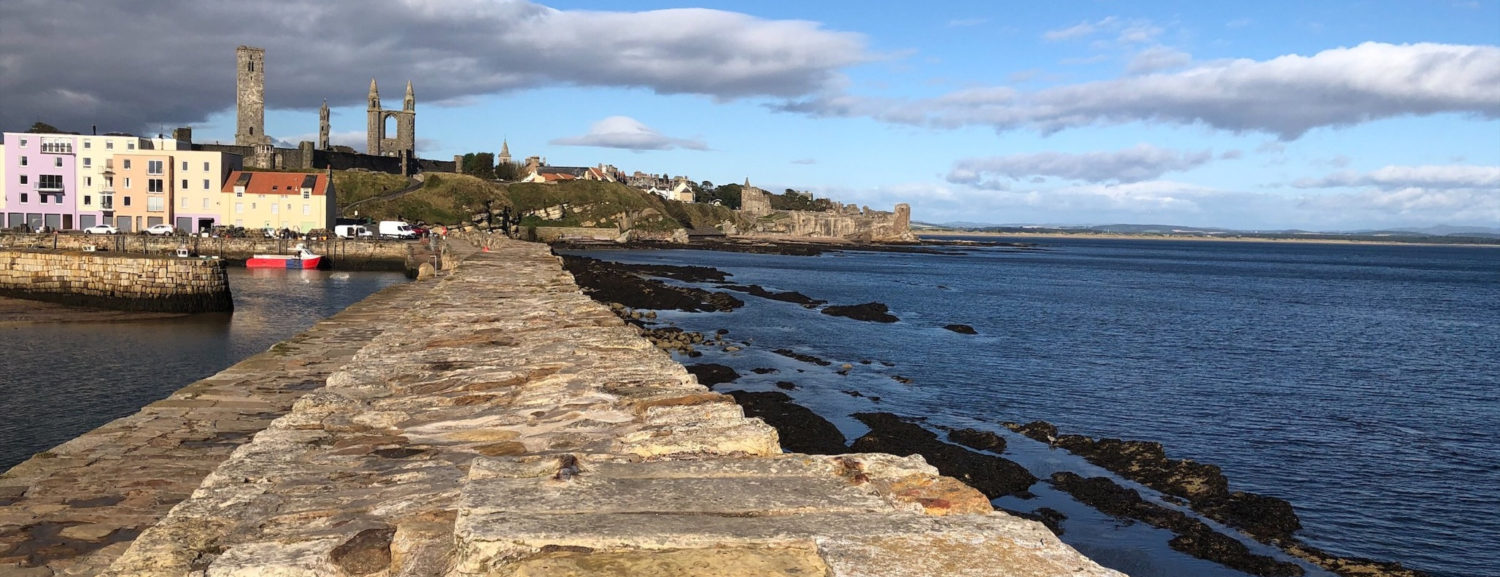Gatty Marine Laboratory has its origins in the government-funded Fisheries Laboratory (1884-1895). It was named after the zoologist Charles Henry Gatty, who paid for the original timber building in 1892, with its permanent stone replacement. As the old timber building was abandoned, the new stone building was officially opened by Lord Reay on 3rd Oct 1896, and the first director was William Carmichael McIntosh FRS. However, in 1913 a fire was reported at the laboratory site. The traces of the break-in indicated a deliberate attack, possibly by women suffragettes.
A few years later, the University Court minuted that the Gatty was to be closed. Since 1931, the laboratory was no longer occupied until the end of WW2. In 1945, Gatty Marine Laboratory received an operating budget of £50(around £1,780 under the modern currency) to be used as a field station by zoologists and botanists based in the Bute Medical Building in the town center. In the following years, Dr. Jimmy M. Dodd started developing the modern laboratory. Later, under the directorships of Adrian Horridge FRS and Michael Laverack, the laboratory built an international reputation, particularly for physiological studies on marine animals. In the 1960s, its scale was extended three times and the majority of the buildings became occupied by the Natural Environment Research Council. Since 1987 the Gatty has been a component Research Institute of the School of Biology. With the richness of fauna and flora, Gatty Marine Laboratory is undoubtedly one of the best places made for scientific research. All kinds of interdisciplinary research have been carried out here: behavior, ecology, physiology, population biology, functional genomics of marine organisms, etc. (For those interested in behavioral neuroscience—the famous Morris water navigation task was developed by Richard G. Morris here in the early 1980s.)
By the early 1990s, the Gatty received the highest number of research grants in marine biology of any UK department. In 1997, a major £4.3 million extension to the building was financed by the University Court. The new building provided a modern lecture theatre and teaching laboratory, as well as some research laboratories for immunological and muscle research. The major part of the new building was occupied by the NERC – sponsored Sea Mammal Research Unit which transferred from Cambridge in 1996. The Gatty site gave SMRU access to local seal populations and world-class experimental facilities: a 40m deep pool for the investigation of diving and foraging behavior.
References
https://synergy.st-andrews.ac.uk/soi/files/2018/04/GattyHistory.pdf
https:// soi.st-andrews.ac.uk/about/
http://adrian-horridge.org/downloads/Gatty%20Marine%20Lab,%20St%20Andrews.pdf
https://en.wikipedia.org/wiki/Gatty_Marine_Laboratory
https://www.nature.com/articles/143550c0
https://research-repository.st-andrews.ac.uk/handle/10023/178
